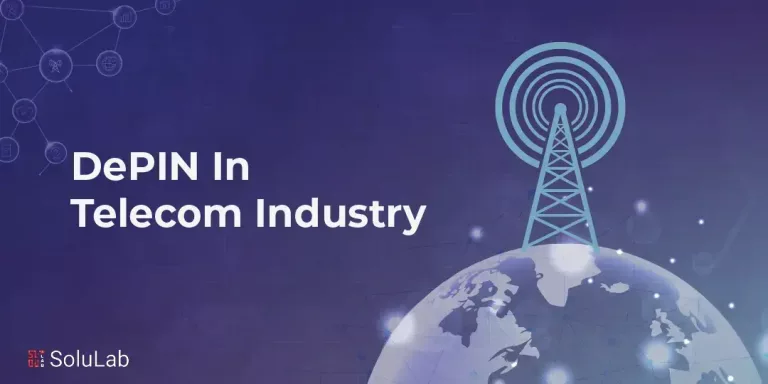With the rebranding of Facebook to Meta, the focus is on the different virtual worlds surrounding us and how we inhabit them. Although Metaverse might still be a work in progress, the idea of spending our time and engagement efforts in an entirely online world is not at all new. In the 1992 science fiction novel Snow Crash, the notion of the Metaverse was first suggested that was derived from the then-existing video games and at the same time speaking to the rise of the early internet. In a way, we are also continuously moving in and out of a virtual world that is self-sustaining at the time when we use different social media platforms like Facebook.
Understanding Metaverse
Metaverse can be referred to as an immersive 3D space that integrates different AR, VR, and MR experiences for the purpose of creating a converged environment where users are able to interact among themselves and the 3D worlds around them. Metaverse has been in the making for a long time, since the rise of games such as Second Life Minecraft. These games have put forward that we could have an alternate virtual reality where we can exist as a 3D replica of ourselves, going through the experiences, emotions, transactions, as well as interactions same as that of the real world.
As a result of this, companies such as Microsoft, Sandbox, Decentraland, and now Facebook or Meta added an element of human-computer interaction. The users can exist in the form of a 3D avatar, and at the same time, the users could also engage in sensory interactions with the virtual world. In the time to come, multiple Metaverse platforms that are built by these companies would come together to form a converged environment which means the true Metaverse.
To state in simple terms, Metaverse can be considered as the first-of-its-kind digital reality. It can translate into a virtual world where users can hang out with their friends, play, shop, learn and work. As a result of this, the concept of the Metaverse would not just be like spending your time online but certainly something beyond that.
Concept of Multiverse
The Multiverse can be referred to as a hypothetical collection of different universes. It serves as an ecosystem with various virtual worlds, where each of the worlds has separate laws, traits, and properties. Looking closely, we can understand that we are living in the Multiverse era of technology. One of the best examples of the Multiverse is the different virtual worlds in online games. Slowly and steadily, the virtual worlds are transforming into primary hubs for social interaction and entertainment. Therefore, it is easy to note that online games, social media platforms, and massively multiplayer online role-playing games are already a part of the Multiverse.
Although the concept of a Multiverse seems to be quite appealing and achievable, it is still a hypothetical group. For the basis of the Multiverse, the scientific explanations are evident in string theory, which explains the smallest unit of matter. This theory implies each of the particles happens to be basically collections of smaller strings. String Theory also states that there are several universes with their separate collection of rules and each of the universes being different from the other. But unfortunately, the theory could not explain our universe without assuming that other universes are also existing today.
The discussions on Metaverse vs. Multiverse also point towards the way how Multiverse is shaping up. You have different multiplayer games globally as the initial drivers for moving into the actual Multiverse. In the long run, Multiverse-based virtual worlds would be working similar to new countries in society that would exist in the cyber world rather than in physical locations, along with complicated political and economic systems interacting with the physical world.
A Comparison Between Metaverse Vs. Multiverse
A detailed comparison between the two would help readers find out the difference between various terms.
Existence
Metaverse is being built, and Multiverse is either theoretical, or it already exists. Metaverse is a technology platform or environment, presently in a ‘work in progress stage’. There are different versions of the same that are already available to users. On the other hand, the Multiverse either does or does not exist. It is not going through any kind of creative process, and scientists are only working to prove its existence.
Components
Metaverse is certainly immersive and has three-dimensional components, and on the other hand, Multiverse may have two-dimensional components. Metaverse combines AR, VR, and MR for the purpose of providing the users with a highly immersive experience. With the evolution of technologies, its depiction of the real world will become more accurate.
At the same time, it will get much easier as well as convenient for users to move in and out of the Metaverse. On the other hand, the Multiverse might contain universes that do not resemble our own. In theoretical terms, there could be a universe with different laws of physics, and hence two-dimensional objects as well as beings.
Universal
Metaverse is universal while Multiverse is not. This happens to be an important difference while comparing Metaverse vs. Multiverse. This happens to be an important difference while comparing. As mentioned, the true Metaverse will be converged and universal, thereby bringing about all the immersive worlds together built by different companies. Multiverse, on the other hand, has inherent multiplicity meaning that there will always be more than one world, which might or not be interoperable.
Interoperability
Metaverse is interoperable, but Multiverse has limited integration. As a result of the interoperability of Metaverse, it allows users to teleport in and out of spaces, use the same credentials, carry objects around, port their NFTs, and a number of others. The level of interoperability in Multiverse is not yet proven and will certainly depend on the level of variance. Now, as we have not discovered the existence of Multiverse as of now, it would be correct to say that integration and interoperability are likely to be limited.
Number of Ecosystems
It has been observed that many consider that both Metaverse and Multiverse include multiple ecosystems. But it is a misconception and is not true. Thus, it becomes important to review the concepts of both carefully to understand the difference. Infinite ecosystems can be found in the case of the Multiverse that is not connected with each other. Metaverse, on the other hand, provides a digital space where the users can very easily switch between different games, experiences, and events. The users can conveniently enter the Metaverse by using a computer or any other augmented reality device like Google Glass to enjoy unified experiences.
Thus, it is quite clearly understood that Multiverse consists of a hypothetical collection of several ecosystems or virtual worlds that are distributed separately, whereas Metaverse offers only a single ecosystem. The users are able to play games, create assets, or watch movies with other friends in the Metaverse and at the same time conveniently pass on their experiences across different platforms within the same universe.
Property
The Multiverse consists of several virtual worlds that are separate from each other. They are usually found in online games that are owned by single entities. Thus, the data, assets, and experiences of users are in the ownership of the company that developed the game. The users can create new assets in Multiverse’s different worlds, but they are unable to extract the intended value from them. For instance, the users are unable to use the achieved in-game collectibles in one game and use the same in other games.
In the case of Metaverse, the users are able to get complete ownership as well as control over their assets. For instance, the NFT avatars relate the virtual identity of the participants in Metaverse with their real identity. Moreover, the participants are also able to get entire ownership of the NFTs they create in the Metaverse. In addition to this, the participants in Metaverse could also trade their NFTs on other platforms in Metaverse without any kind of problems or troubles.
Connections
Another point of difference between Metaverse and Multiverse is the connection among their components. The connection between these components shows the range of randomness and order in both. There is no specific order in the case of Multiverse since the different universes remain separate from each other. In the case of virtual worlds in Multiverse, they possess variable traits and never connect with each other. Therefore, the level of randomness is very high in the Multiverse.
However, in the case of Metaverse, the order gets an intimidating boost since it has a single universe. The entire Metaverse is connected in a way and depends on a particular order for the flow of information across the network. So, it is noticeable that there is a difference between the two concepts of Metaverse and Multiverse in terms of the connection of different components between them.
Entities
Another striking difference between Metaverse and Multiverse is related to the elements. At the time when you think of the Multiverse, it is very unlikely that you would be finding individual components responsible for building the universe. The Multiverse is a huge collection of virtual worlds differing from each other in terms of features, traits, as well as individual elements.
Therefore, it becomes quite difficult to conclude a clear impression as to which components result in the actual strengthening of the Multiverse. We only have separate virtual worlds as the elements of the Multiverse. However, Metaverse showcases various entities with unique abilities. The entities Metaverse include human beings, AI, robots, and a number of others. All these entities have separate roles to play in the Metaverse, thereby making the experience much more interesting for the users.
Conclusion
After reading through, the points of differences between Metaverse and Multiverse seem clear. Looking closely, we find out that Metaverse is a conceptual idea creating the path for a future where it is possible to have an entirely connected virtual world, whereas Multiverse presents the prospects for the existence of a number of digital ecosystems. Now, the main question that arises at this point in time is which one of the two will come at the top. The answer to this question is still in the hunt. There are many who believe that Metaverse comes on top as a result of the unified user experience it offers.
According to an estimate from Facebook, Metaverse is very close to seeing a “market launch,” and it is expected to have a billion users by the year 2031. So, there arises another question of whether Multiverse will fail as Metaverse expands further. The answer to this question cannot be given appropriately since Metaverse is still in the phase of development.
On the other hand, Multiverse already has a number of functional virtual worlds that address real-world tasks. Moreover, if Multiverse does exist, it could have a parallel world where Metaverse is already designed, developed, and deployed. Finally, the Multiverse is among the foundational rules of existence which will control our lives’ core fabric and eventually, a major part of that life could be played out in the Metaverse.




